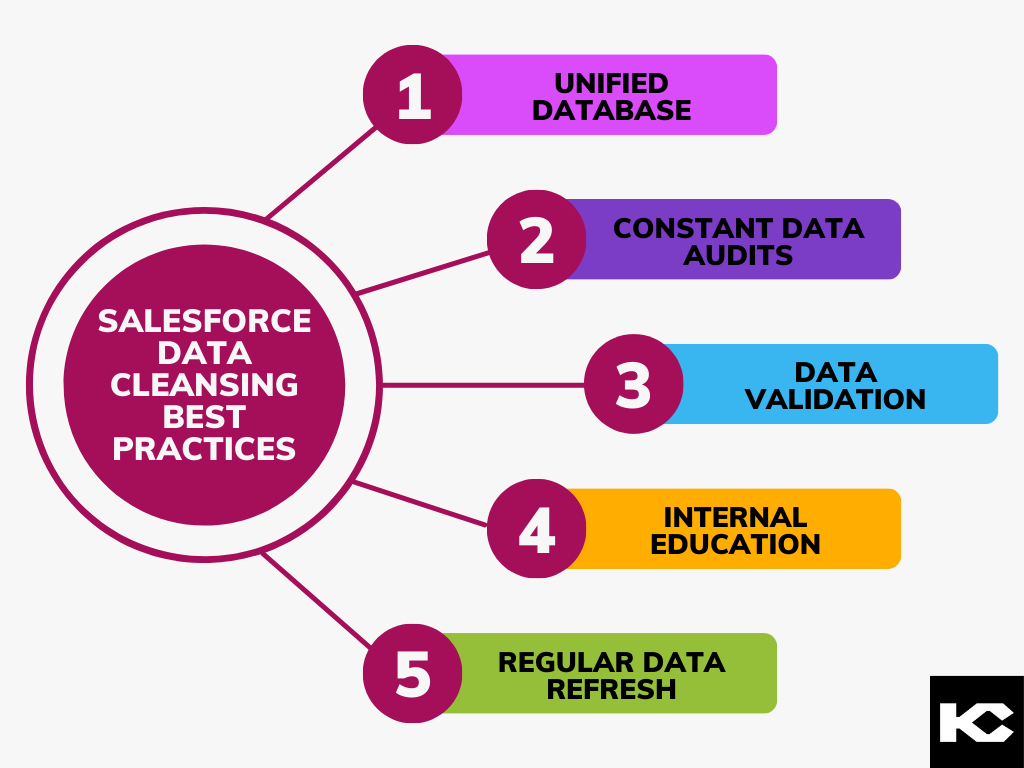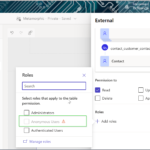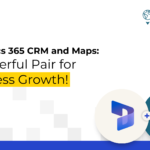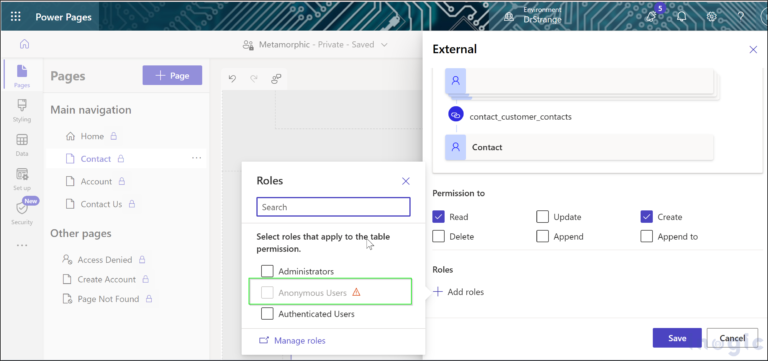The Salesforce data cleansing process involves identifying, correcting, and maintaining accurate and consistent data within the Salesforce platform. Data cleansing is essential to ensure the integrity of the information stored in Salesforce and to enhance the effectiveness of business operations and decision-making.
Bad Data in Salesforce
“Bad data” in the context of Salesforce refers to inaccurate, incomplete, outdated, or inconsistent information stored within the Salesforce database. This can include incorrect contact details, duplicate records, incomplete entries, or irrelevant data.
Dealing with bad data is a common challenge in CRM systems like Salesforce, as it can lead to inefficiencies, hinder decision-making, and affect the overall quality of customer interactions. Organizations often employ data cleansing and data quality measures to identify and rectify bad data, ensuring that their Salesforce instance remains accurate and valuable.
Implementing regular data maintenance practices, using validation rules, employing automation, and conducting data audits are some ways to prevent and address bad data in Salesforce. It’s essential to maintain a clean and accurate database to maximize the benefits of Salesforce for customer relationship management and business operations.
Common Data-related Errors in Salesforce :
- Duplicate Records: When the same data exists in the system multiple times, it can lead to confusion, wasted resources, and inaccurate reporting.
- Incomplete Entries: Missing or incomplete data fields can hinder effective communication and decision-making. For example, a contact with missing phone numbers or email addresses.
- Inaccurate Information: Incorrect data, such as wrong names, addresses, or contact details, can result in miscommunication and missed opportunities.
- Data Entry Mistakes: Human errors during data entry can lead to typos, incorrect formatting, and other mistakes that impact data integrity.
- Outdated Data: Stale or outdated information can lead to missed opportunities, incorrect analysis, and ineffective communication.
- Data Format Issues: Data fields with inconsistent formats (e.g., different date formats, and currency symbols) can cause confusion and hinder data analysis.
- Dependency Errors: When data is interconnected, changes in one area can affect related data, leading to errors if not managed properly.
- Data Integration Errors: When integrating data from different sources, inconsistencies can arise, leading to inaccurate or incomplete data.
Explore what we offer in terms of Salesforce Migration Services that we have for you.
![]() Don’t forget to check out: Data Migration and Transformation: Ensuring a Smooth Salesforce Implementation
Don’t forget to check out: Data Migration and Transformation: Ensuring a Smooth Salesforce Implementation
Salesforce Data Cleansing Process
- Data Assessment and Analysis:
- Identify the data quality issues you want to address, such as duplicates, incomplete entries, or inaccuracies.
- Analyze the extent of the data issues by running reports, queries, or data analysis tools within Salesforce.
- Data Deduplication:
- Identify and merge duplicate records using Salesforce’s built-in deduplication tools or third-party apps.
- Set criteria for identifying duplicate records based on fields like name, email, or phone number.
- Data Validation Rules:
- Create validation rules to enforce consistent and accurate data entry.
- Specify conditions that data must meet (e.g., valid email format, required fields) before being saved.
- Data Enrichment:
- Utilize data enrichment tools or services to automatically update and enrich data with missing or outdated information.
- Data Standardization:
- Standardize data formats to ensure consistency (e.g., phone numbers, addresses, date formats).
- Use picklists and lookup fields to maintain uniform data entries.
- Automated Workflows:
- Implement automated workflows and processes to streamline data updates and corrections.
- For example, automatically converting leads to contacts when certain criteria are met.
- Regular Data Cleansing:
- Schedule regular data cleansing routines to identify and address new data issues that may arise over time.
- Consider setting up automated reminders or tasks for data maintenance.
- User Training:
- Provide training to Salesforce users to promote accurate data entry practices.
- Educate users about the importance of data quality and how their input impacts the overall integrity of the system.
- Data Audits:
- Conduct periodic data audits to assess the effectiveness of your data cleansing efforts.
- Identify trends, recurring issues, and areas that require further improvement.
- Data Governance:
- Establish data governance policies and guidelines to maintain data quality and consistency.
- Define roles and responsibilities for data management and quality control.
Salesforce Data Cleansing Best Practices
Effective data cleansing is crucial for maintaining accurate and reliable data within Salesforce. Here are some best practices to consider when implementing a Salesforce data cleansing strategy:

![]() Check out another amazing blog by Kizzy Consulting here: Salesforce Migration Services | All You Need to Know
Check out another amazing blog by Kizzy Consulting here: Salesforce Migration Services | All You Need to Know
Why Salesforce Data Cleansing with Kizzy?

Kizzy Consulting
Kizzy Consulting is a Salesforce Ridge Consulting Partner in the USA and has successfully implemented 100+ Salesforce projects for 100+ clients across sectors like Financial Services, Insurance, Retail, Sales, Manufacturing, Real estate, Logistics, and Healthcare in countries like the US, Europe, and Australia. Get a free consultation now by emailing us at [email protected] or Contact us.











